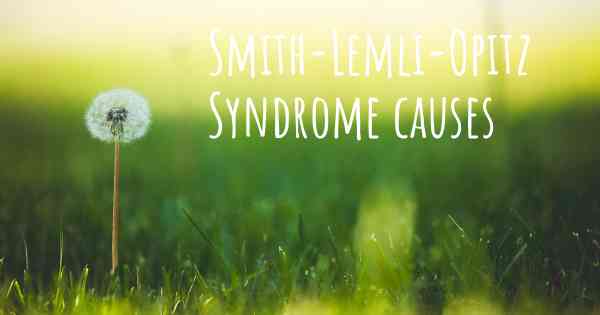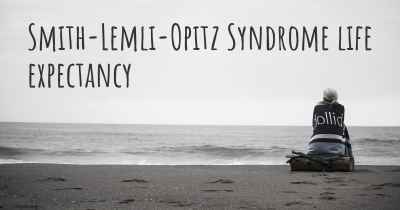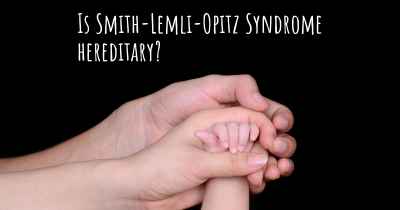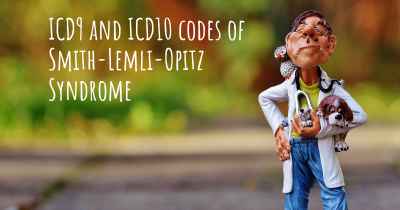Which are the causes of Smith-Lemli-Opitz Syndrome?
See some of the causes of Smith-Lemli-Opitz Syndrome according to people who have experience in Smith-Lemli-Opitz Syndrome

Smith-Lemli-Opitz Syndrome (SLOS) is a rare genetic disorder that affects multiple systems in the body. It is caused by mutations in the 7-dehydrocholesterol reductase (DHCR7) gene, which is responsible for producing an enzyme called 7-dehydrocholesterol reductase. This enzyme plays a crucial role in the synthesis of cholesterol, a vital component of cell membranes and a precursor for various hormones and molecules in the body.
Individuals with Smith-Lemli-Opitz Syndrome have a deficiency or absence of functional 7-dehydrocholesterol reductase enzyme, leading to a disruption in cholesterol synthesis. This results in abnormally low levels of cholesterol and an accumulation of a compound called 7-dehydrocholesterol (7-DHC) in the body.
The inherited autosomal recessive nature of Smith-Lemli-Opitz Syndrome means that an affected individual must inherit two copies of the mutated DHCR7 gene, one from each parent. If an individual inherits only one mutated gene, they are considered carriers and do not typically exhibit symptoms of the syndrome.
The specific mutations in the DHCR7 gene that cause Smith-Lemli-Opitz Syndrome can vary among affected individuals. Over 100 different mutations have been identified, and the severity of the syndrome can vary depending on the specific mutation and its impact on enzyme function.
The deficiency of functional 7-dehydrocholesterol reductase enzyme leads to a disruption in the synthesis of cholesterol, which has far-reaching effects on various systems in the body. Cholesterol is essential for the normal development and functioning of the brain, heart, limbs, and other organs.
Smith-Lemli-Opitz Syndrome affects individuals in different ways, and the severity of symptoms can vary widely. Some common features of the syndrome include:
- Facial abnormalities: Individuals with Smith-Lemli-Opitz Syndrome may have a characteristic facial appearance, including a small head (microcephaly), a broad nasal bridge, a small jaw, widely spaced eyes (hypertelorism), and malformed ears.
- Growth and developmental delays: Children with Smith-Lemli-Opitz Syndrome often experience delays in growth and development. They may have intellectual disabilities, learning difficulties, and delayed motor skills.
- Cardiac abnormalities: Some individuals with Smith-Lemli-Opitz Syndrome may have congenital heart defects, such as ventricular septal defects or atrial septal defects.
- Genital abnormalities: Males with the syndrome may have underdeveloped or ambiguous genitalia.
- Behavioral and neurological issues: Smith-Lemli-Opitz Syndrome can also affect the central nervous system, leading to behavioral problems, autism spectrum disorder, sleep disturbances, and poor muscle tone.
- Malformations of limbs: Limb abnormalities, such as fused or webbed fingers or toes (syndactyly), extra fingers or toes (polydactyly), or underdeveloped limbs, may be present in some individuals.
It is important to note that the severity and combination of symptoms can vary widely among individuals with Smith-Lemli-Opitz Syndrome. Some individuals may have mild symptoms and lead relatively normal lives, while others may have more severe impairments and require significant medical and developmental support.
Diagnosis of Smith-Lemli-Opitz Syndrome is typically based on clinical features, biochemical testing, and genetic testing. Measurement of cholesterol and 7-DHC levels in the blood can help confirm the diagnosis. Genetic testing can identify mutations in the DHCR7 gene, providing a definitive diagnosis.
Treatment for Smith-Lemli-Opitz Syndrome is primarily supportive and aims to manage the symptoms and complications associated with the disorder. This may involve a multidisciplinary approach, including medical interventions, early intervention programs, physical therapy, occupational therapy, and educational support.
While there is currently no cure for Smith-Lemli-Opitz Syndrome, ongoing research is focused on understanding the underlying mechanisms of the disorder and developing potential therapeutic interventions. Experimental treatments, such as cholesterol supplementation and inhibitors of cholesterol synthesis, are being explored to alleviate some of the symptoms and improve outcomes for affected individuals.
In conclusion, Smith-Lemli-Opitz Syndrome is a rare genetic disorder caused by mutations in the DHCR7 gene, leading to a deficiency of the 7-dehydrocholesterol reductase enzyme and disruption in cholesterol synthesis. This results in a wide range of symptoms affecting multiple systems in the body. Early diagnosis and intervention are crucial in managing the symptoms and providing appropriate support for individuals with Smith-Lemli-Opitz Syndrome.








